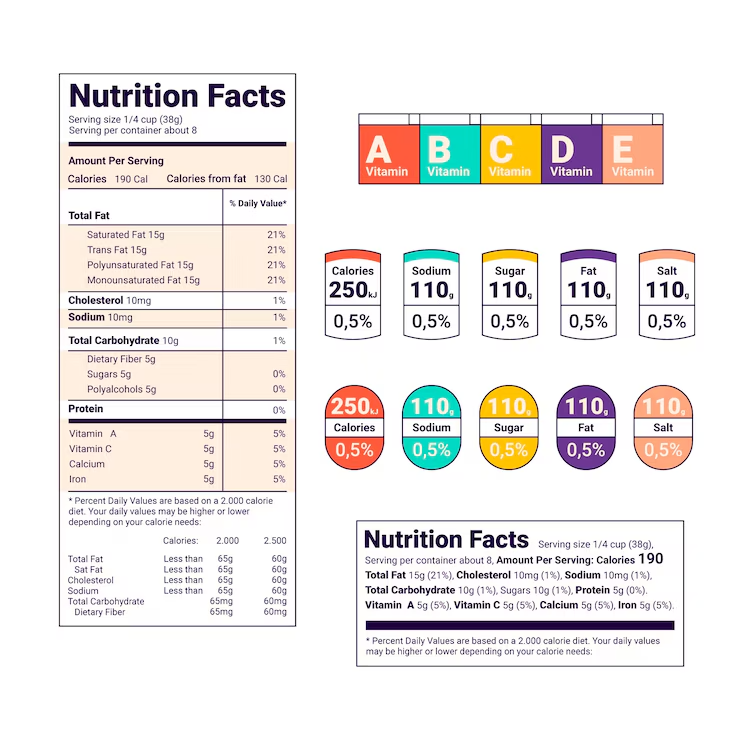Ceramics have been a part of human culture for thousands of years, often celebrated for their aesthetic qualities and durability. However, ceramic nutrition facts have recently gained attention in the health and wellness community. Here, we will delve into the nutritional benefits of ceramics, dispel common myths, and answer your burning questions about this intriguing topic.
What Are Ceramics?
Ceramics are inorganic, non-metallic materials that undergo a transformation when subjected to high temperatures. This category includes a wide range of items, from pottery to tiles, and even dental implants. While most people think of ceramics in terms of their physical properties, their nutritional benefits are increasingly recognized.
Understanding the Nutritional Value of Ceramics
Are Ceramics Edible?
One of the most common questions regarding ceramic nutrition facts is whether ceramics are edible. The short answer is no; ceramics themselves are not food items. Instead, they serve as containers for food or as ingredients in certain culinary practices, such as ceramics used in molecular gastronomy.
Nutritional Benefits of Foods Served in Ceramic Containers
While the ceramic material itself doesn’t provide nutritional value, many foods cooked or served in ceramic dishes can be nutritious. For instance, using ceramic cookware can be a healthier option for food preparation. Here are some benefits:
- Non-reactive Surface: Ceramic cookware does not react with acidic foods, preserving their flavors and nutritional integrity.
- Even Heating: Ceramic distributes heat evenly, reducing the likelihood of burning or uneven cooking, which can help retain nutrients.
- Healthier Cooking Options: Many ceramic cookware options are free from harmful chemicals like PFOA and PTFE, making them a safer choice.
Common Myths About Ceramic Nutrition
Myth 1: Ceramics Contain Nutrients
It’s a common misconception that ceramics contain vitamins or minerals beneficial to health. While they can help prepare and serve nutritious meals, the materials themselves do not offer nutritional benefits.
Myth 2: All Ceramic Cookware Is the Same
Not all ceramics are created equal. Different glazes and finishes can affect the safety and usability of ceramic cookware. Look for high-quality, lead-free ceramic cookware to ensure you’re cooking safely.
How to Incorporate Ceramics into Your Diet?
Cooking with Ceramic Cookware
Using ceramic cookware can enhance your cooking experience. Here are some tips for incorporating it into your meal prep:
- Choose the Right Pieces: Invest in high-quality ceramic pots and pans designed for your cooking needs.
- Use Proper Techniques: Avoid using metal utensils that can scratch ceramic surfaces. Instead, opt for silicone or wooden utensils.
- Monitor Heat Levels: Ceramics retain heat well, so lower heat settings may be sufficient to cook your food thoroughly.
Serving Food in Ceramic Dishes
Serving food in ceramic dishes can also elevate your dining experience. Here’s how:
- Presentation: The aesthetic appeal of ceramics can enhance the look of your meal, making it more appetizing.
- Flavor Preservation: The non-reactive nature of ceramics helps maintain the natural flavors of the food served.
Health Benefits of Eating from Ceramic
Chemical-Free Dining
High-quality ceramics are often made without harmful chemicals, making them a safer option for serving and consuming food. This reduces the risk of chemical leaching into your meals.
Promotes Mindful Eating
Eating from beautiful ceramic dishes can enhance your mealtime experience, promoting mindfulness and encouraging healthier eating habits.
Environmentally Friendly
Ceramic materials are often more sustainable compared to plastic alternatives. Choosing ceramics helps reduce plastic waste, contributing to a healthier planet.
Conclusion
Understanding ceramic nutrition facts helps clear up misconceptions and highlights the benefits of using ceramics in food preparation and serving. While ceramics themselves do not offer nutritional value, their ability to enhance cooking techniques and promote healthier eating habits cannot be overlooked. Whether you’re cooking, serving, or simply appreciating the beauty of ceramic dishes, incorporating them into your kitchen can lead to a more enjoyable and health-conscious dining experience.
